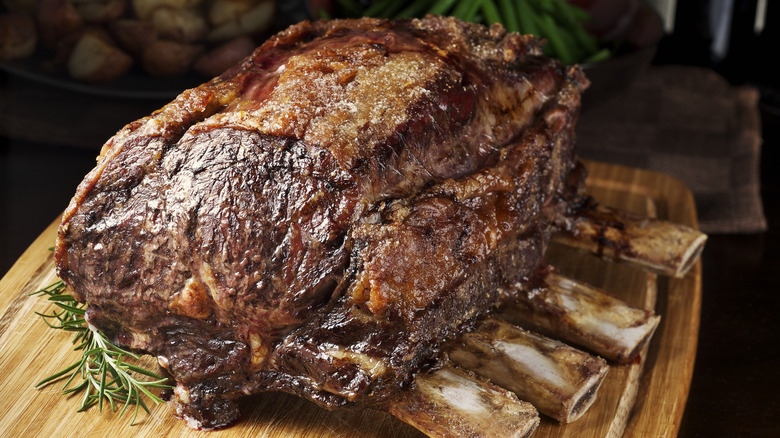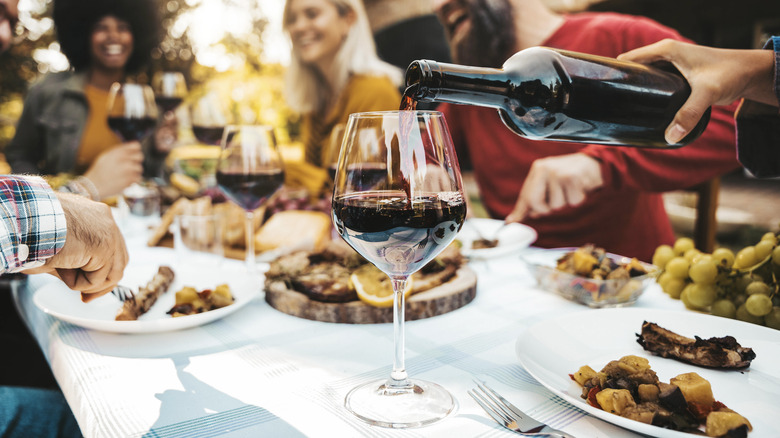The Best Wine Pairing For Prime Rib Is A Bold Classic
A beautifully slow-roasted prime beef rib, crusted in a salty, herby rub is always a show stopper, especially right before it's carved. What a decadent treat to be watching those thick, juicy slices fall onto the cutting board, knowing one of them will take up half of your plate. Big, bold prime rib deserves a vivacious wine, with just the right amount of bite. Balance is the best move here. A wine that's too light won't offer enough acid, body, or tannins to cut through the savory richness and melt-in-your-mouth fat of the prime rib. A wine that's too dry and acidic drowns out the meat's plush umami. Find just the right one, though, and it's a symphony of flavor: We're talking cabernet.
Cabernet sauvignon offers the most reliably good pairing for the rich meat. Think of the balancing act of pairing horseradish cream with steak for an elevated flavor experience. The spiced creaminess of the horseradhish enhances the rich flavors in the steak. That's what the wine should do with the prime rib, too. Cabernet is a wine that's full of zing that can be super tannic and acidic, and that's why the biggest, boldest cabs are great with charred, smoky steaks. But we suggest you go for cabernets with slightly fewer tannins to hit the sweet balancing spot with velvety, tender prime rib.
Pair prime rib with cabernet from this region
Cabernet is the most popular varietal in the world, and one of two wines that put Napa Valley on the map (the other being chardonnay). Cabernet sauvignon grapes can be grown in many different places, meaning examples can taste wildly different from one another in terms of acidity, tannins, and body. We recommend a good-quality Napa Valley cab for your prime rib.
Executive chef Matthew Kreider at Fort Lauderdale's Steak 954 agrees. When he thinks about what his diners would choose with prime rib at this busy South Florida steakhouse, he says, "I think my guests would all say a nice big cabernet. People love the big fruits and lighter tannins that will work with a nice cut of prime rib."
Those lush, dark fruits — blackberry, cherry, blackcurrants — complement the herby crust of a prime rib. Napa Valley is known for fruity cabs like this: Medium-bodied by way of being fruit-forward and less dry than other cabs. The reason is the skin on the grapes. Those sunny California days leave them thin, nothing like the thick cabernet sauvignon grapes in Washington's Columbia Valley, where the nights get much colder. The tannins live in the grape skins, so the thicker the skin, the more tannins and acid in the wine. Well-regarded Napa Valley cabernets are also oaky, a flavor which mellows out those dry tannins. Crack open a bottle for a cozy night at home with this Instant Pot prime rib recipe, and you'll never look back.

